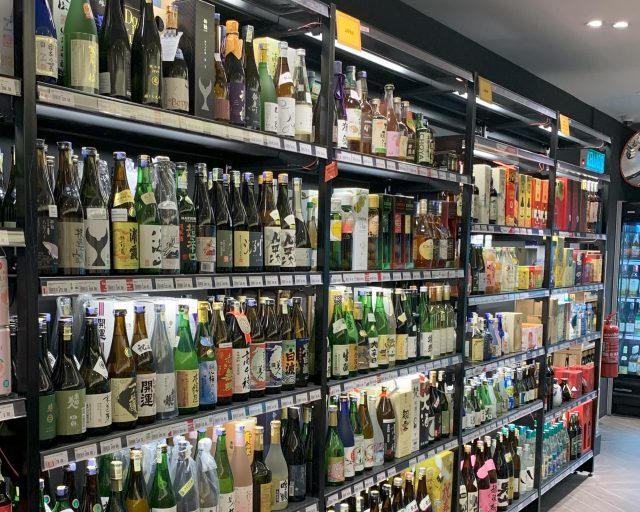Sake exports show progress towards key targets, according to JSS
The trade body hailed victories in premiumisation and expanded reach when Japan’s government published its latest statistics on sake exports.

The Japan Sake and Shochu Makers Association (JSS) has responded positively to figures recently published on sake exports in the 2023 fiscal year. The data, from the Japanese Ministry of Finance, suggests that the sake boom is far from finished. Moreover, the results indicate that more communities are enjoying the drink, and at a higher quality, than ever before.
The headline figures demonstrate that sake exports are still at exceptionally high levels, even in a challenging year. Value fell 13% in the year, while volume fell by 19%. However, given that sake exports had grown every year for the prior 13 years, the export market is still 1.8 times larger than in 2019. The total figure for the year, ¥41.1 billion, demonstrates a remarkable decade of growth for Japan’s national beverage.
Moreover, the JSS’s analysis shows that sake is developing into a more mature and stable market. 2023 marked new records both for value per bottle and for the international reach of sake.
As the value of exports fell significantly less than the volume exported, the price per bottle in the export market hit new highs. Indeed, the standard 720ml bottle surpassed an average export value of ¥1,000 for the first time in history.
It was also a remarkable year for sake’s international reach. Though exports are concentrated in a few key regions, the JSS has worked hard to bring sake to new and emerging markets. In results which seem to vindicate the approach, sake was sold to 75 countries and territories worldwide in 2023; again, this is the highest number on record.
A complex global picture
Asia, which accounts for 67% of sake exports, remains the most important market for producers. Within this, China is a dominant force, accounting for ¥12.47bn of sales in 2023.
The Chinese market was particularly difficult last year, accounting for the 12% drop in value. The JSS highlighted the impact of a recession on fine dining, which limited sake’s performance in high-end Japanese restaurants, and a suspension of imports of Japanese seafood that also depressed the on-trade performance. However, China also set records for average value per bottle, surpassing ¥1,500 for the first time.
The second largest market for sake, the USA, similarly showed a drop in overall exports (down 17%) possibly due to consumers tightening their belts in the face of inflation. However, it also increased the average price per bottle, showing a clear path to premiumisation for the drink.
Partner Content
The US market is showing a complex trajectory. Pre-Covid, sales in both on- and off-trade settings had been growing, termed “a very important trend” by sake educator Marcus V. Pakiser. The pandemic drove off-trade sales, as people drank at home in the midst of restaurant closures. The readjustment in 2023 meant that off-premise consumption fell, but sales in fact remain strong, as the on-trade returns to a pre-pandemic position.
Elsewhere, smaller and emerging markets showed clear growth. In Asia, both South Korea and Taiwan grew their exports, and Latin America grew its sake market as an overall bloc.
Opportunities for growth
Those results are particularly notable, as the JSS worked throughout the year to bring sake to the world. It attended ProWein 2023, meeting key stakeholders in the global drinks trade, and will return this year. As a new project in 2024, it will organise its first Japanese sake business meeting in Hungary.
It has also partnered with the key international organisations. The JSS has joined forces with the Association de la Sommellerie Internationale to run masterclasses around the world, including in Canada, Mexico and Ecuador.
It will also partner in February with the Union de la Sommellerie Francaise for a pairing dinner at Saisons, the Michelin-starred restaurant at Lyon’s Institute Lyfe. The event will bring together six sake breweries and six Meilleurs Ouvriers de France awarded sommeliers.
Even in Japan, the association is targeting international consumers. It conducted a series of events at international airports to capture the attention of foreign travellers. With tourism now reaching 80% of pre-Covid levels, it has become a key avenue to capture international attention.
Despite not matching the rapid growth of previous years, the promotion of value and new markets shows that 2023 has been a step forward for the industry. Above all, it demonstrated that there is still huge potential growth for sake exports, which is now being nurtured with targeted efforts.
“Japanese sake is currently consumed in very limited settings,” commented one sake brewery’s overseas representative. “By providing detailed suggestions on how to enjoy sake and pairing it with food, it is likely that sake will become a more familiar presence.” With the JSS putting sake on more tables in more regions, the sake boom should continue a while yet.
Related news
Carlsberg Hong Kong expands no and low alcohol portfolio
Diageo sells East African Breweries stake to Asahi for US$2.3bn
Treasury Wine Estates plans leaner future amid US and China slowdown




